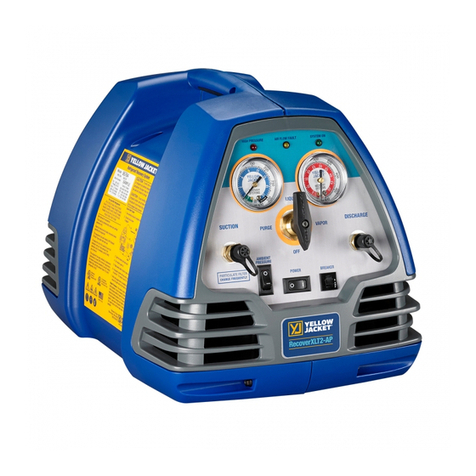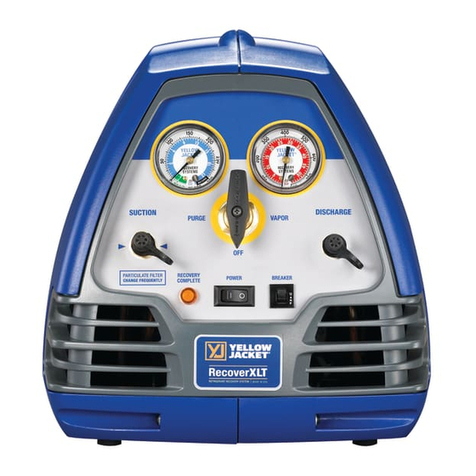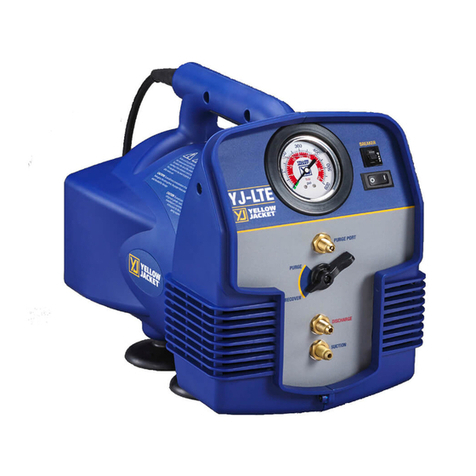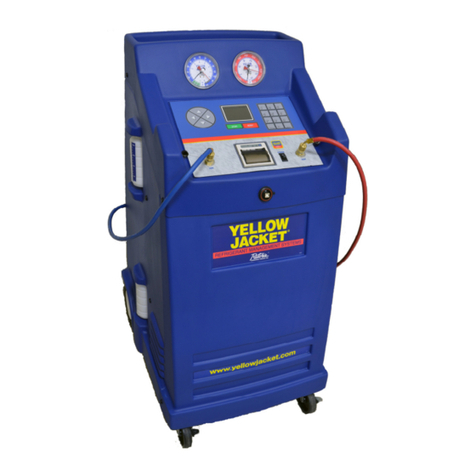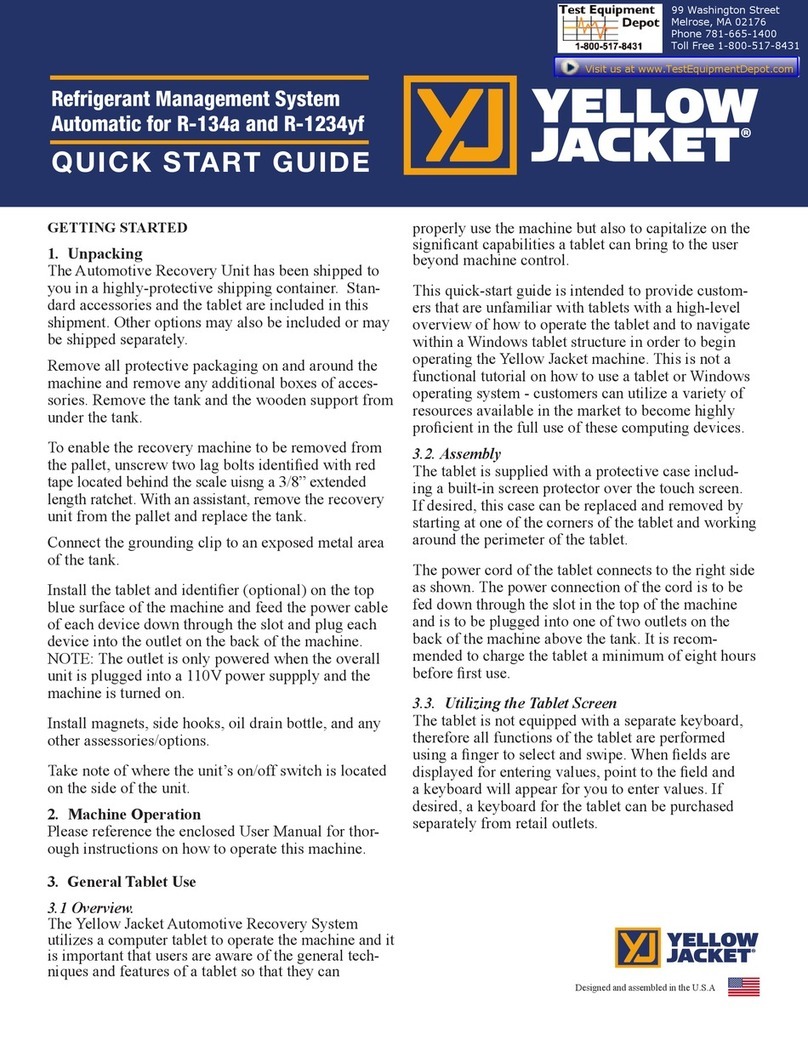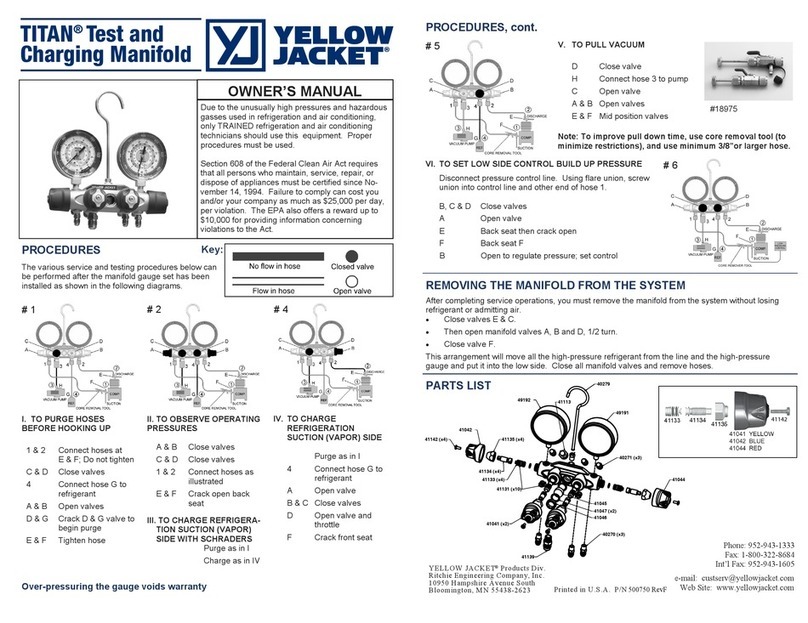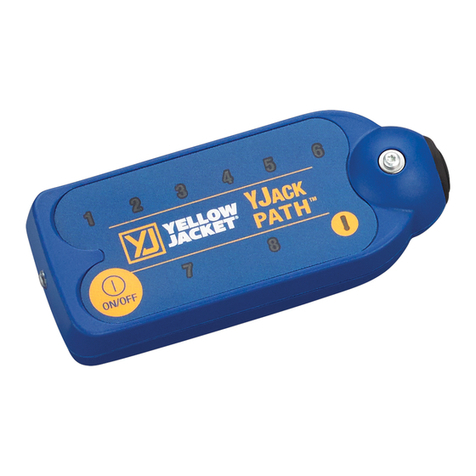
The Recovery Only mode should be used to fully
evacuate all refrigerant from an air conditioning
system. For instance, if the system needs to be
opened to atmosphere to replace a part, all
refrigerant must be removed before opening the
system.
MODE 1 Operational Steps
1. Refer to Pre-Operation Check List.
2. Verify the automobile air conditioning system
is off.
3. Press MODE 1 for recovery operations. The
LCD should read “CONNECT HOSES
ENTER TO CONTINUE.”
NOTE: If desired, the gauges of the 830 SERIES
can now be used to aid investigation of an A/C
system problem. Ensure the automobile A/C
system is turned off prior to selecting a mode on
the 830 SERIES.
2. Connect the high and low side auto service
hoses to the respective high and low side
service ports on the automobile A/C system.
Open the service hose valves.
3. Press ENTER to begin recovery operations.
(Models with the optional refrigerant
identifier)
The unit will display “ID REFRIGERANT Y/N.” To
make your selection use the increase and decrease
keys to toggle from Y to N. Press the enter key to
enter your selection, If yes is selected the unit will
begin the refrigerant identification process.
If the refrigerant does not pass the identification
process (98% pure) the unit will clear itself and
display an error message “REFRIG ID FAILED.” If
this occurs run the identification process again to
insure that the proper identification of the refrigerant
purity level.
If it fails a second time, disconnect hoses from the
automobile and take the appropriate measures to
recover the refrigerant from the automobile with a
separate unit designated to recover contaminated
refrigerant and have the refrigerant properly
disposed of.
WARNING: DO NOT RECOVER
CONTAMINATED REFRIGERANT WITH THIS
UNIT. RECOVERING CONTAMINATED
REFRIGERANT WILL VOID ALL
WARRANTIES AND MAY CAUSE DAMAGE
TO OTHER AUTOMOBILES THAT YOU
SERVICE IN THE FUTURE.
During the recovery operation, refrigerant is
removed from both the high and low side of the
automobile air conditioning system. The LCD will
display the amount of refrigerant being recovered
and the status line will read “RECOVERING
REFRIG.”
Note: If “RECOVERY HOLD” Option is selected
The unit will stop at 6” of Mercury and hold for five
min as required by EPA Per SAE J2211. If the
pressure rises to 0 psi the compressor will restart
and the unit will pull down to the required 6” of
Mercury and hold for two minutes. The unit will
repeat this process until the system pressure
remains stable at vacuum for two minutes or until it
fails this process five times. If the process fails five
times the status line will read “ LEAK CHECK
FAILED.” This may mean that the automobile A/C
system has a gross leak and it will not hold a
vacuum.
If this occurs take the appropriate steps to locate
the leak and properly repair it.
If the “RECOVERY HOLD” option is not selected
the unit will shut off at the required level of vacuum
and the operator must insure that the EPA standard
(SAE J2211) is met..
After the system turns off, the unit will beep to alert
the technician the job is complete. The oil removed
from the auto will drain into the oil drain bottle on the
side of the unit. Because a small amount of gas will
be released as the oil drains, a small hissing sound
may come from the bottle.
6. Verify the message on the LCD reads
“RECOVERY COMPLETE.”
7. Press the RESET button. The LCD should read
“CHECK OIL LEVELS.”
8. Shut the service valves and disconnect the high
and low side auto service hoses from the
automobile.
9. Measure the oil in the oil drain bottle. Dispose of
recovered oil in a proper manner.
10. Use the oil injection switch to add new oil back
into the automobile A/C low side port in
accordance with the automobile manufacturer’s
Mode 1– Recovery Only
7
